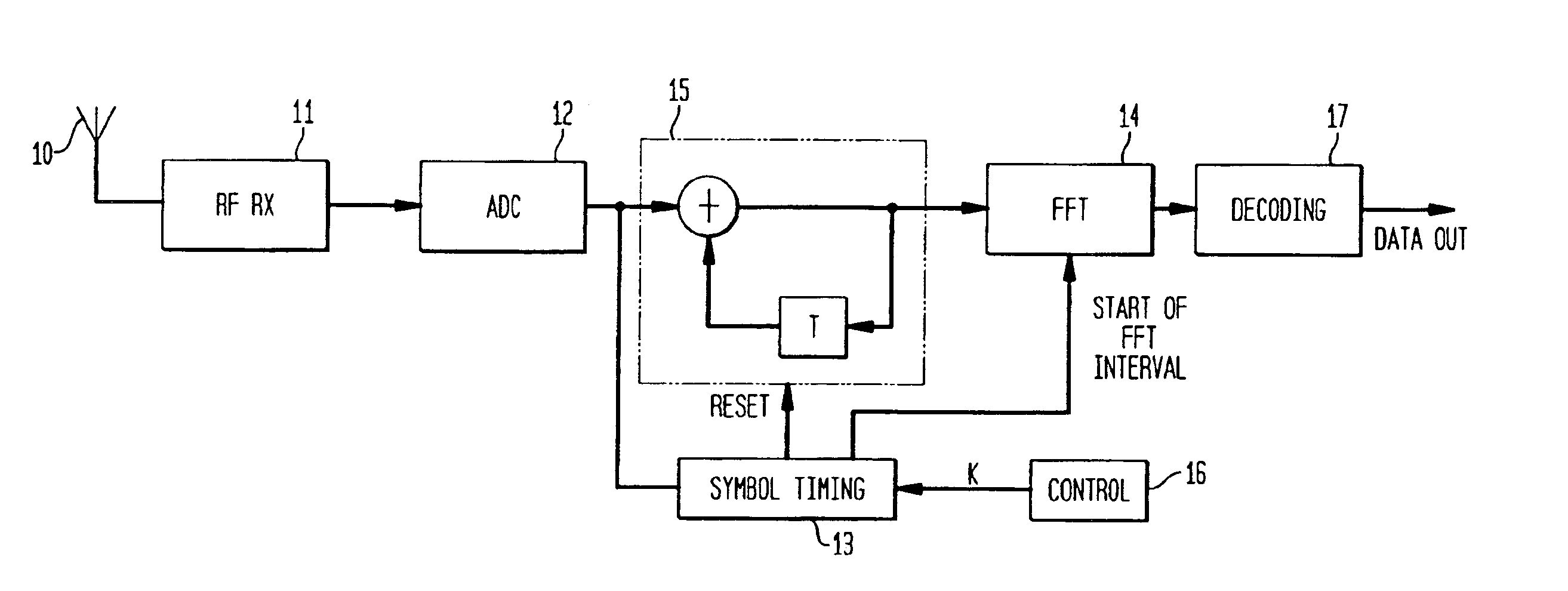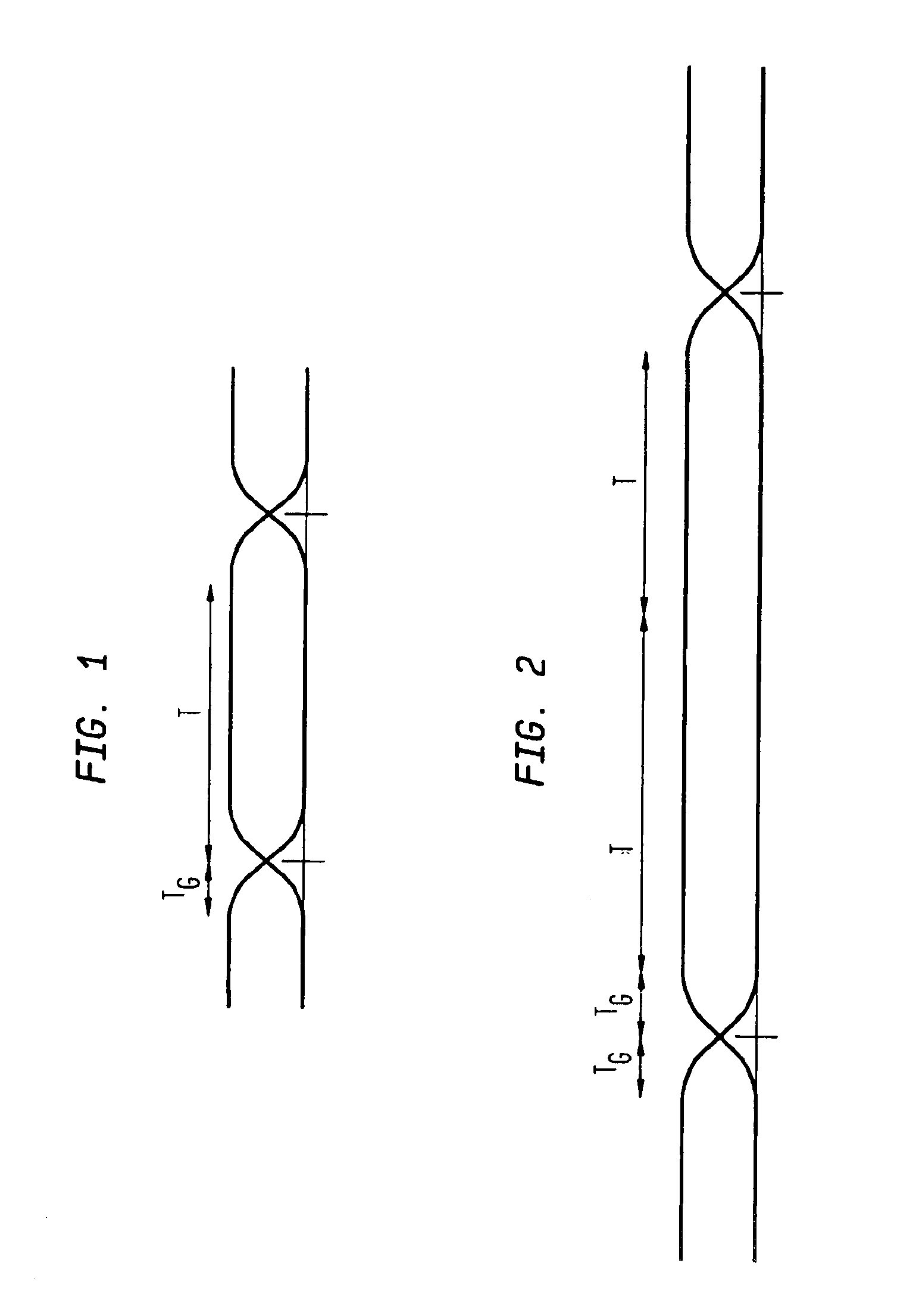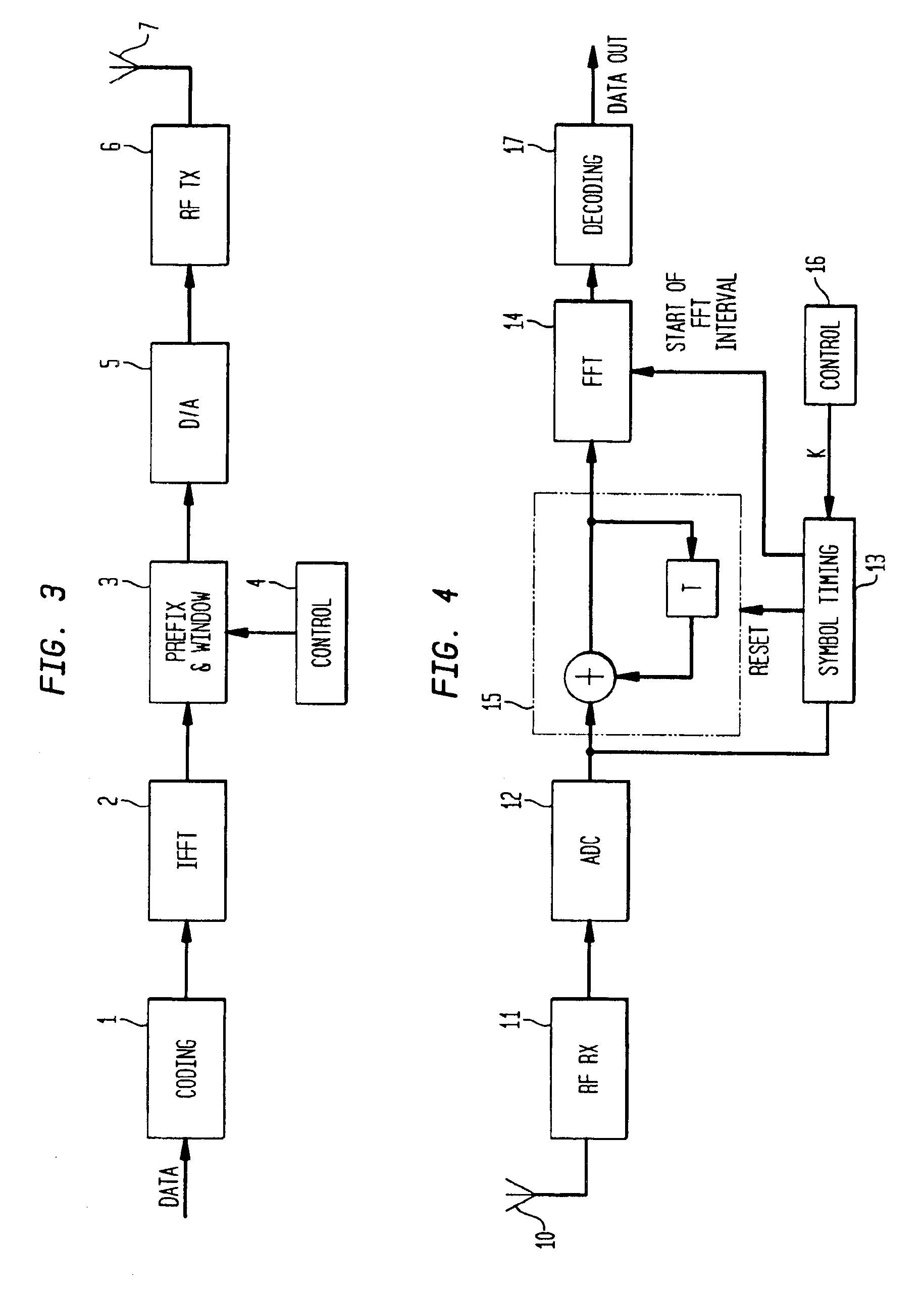Frequency division multiplexing system with selectable rate
a frequency division multiplexing and selectable rate technology, applied in the field of communication systems, can solve problems such as bad spectral efficiency, and achieve the effect of reducing bit rate, increasing range and delay spread toleran
- Summary
- Abstract
- Description
- Claims
- Application Information
AI Technical Summary
Benefits of technology
Problems solved by technology
Method used
Image
Examples
Embodiment Construction
[0018]FIG. 1 shows an OFDM symbol transmitted with a symbol duration T and a guard time TG. The object of the guard time TG is to accommodate any interference between consecutive symbols due to dispersion or multi-path interference (collectively referred to as ‘delay spread’), and to leave a time T over which the symbol can be received free from such interference. Under some conditions, or in some applications, it may happen that the guard time TG is insufficient to accommodate this delay spread (as in FIG. 1). It may also happen that a greater range will be required, i.e. a higher signal-to-noise ratio in the recovered signal. Simply increasing the guard time TG would accommodate a larger delay spread, though it would not affect the range. Decreasing the clock rate seems a simple way of increasing the guard time TG and the symbol duration T, but it would also decrease the frequency spacing 1 / T between the sub-carriers. This would proportionately decrease the overall bandwidth of th...
PUM
 Login to View More
Login to View More Abstract
Description
Claims
Application Information
 Login to View More
Login to View More - R&D
- Intellectual Property
- Life Sciences
- Materials
- Tech Scout
- Unparalleled Data Quality
- Higher Quality Content
- 60% Fewer Hallucinations
Browse by: Latest US Patents, China's latest patents, Technical Efficacy Thesaurus, Application Domain, Technology Topic, Popular Technical Reports.
© 2025 PatSnap. All rights reserved.Legal|Privacy policy|Modern Slavery Act Transparency Statement|Sitemap|About US| Contact US: help@patsnap.com



